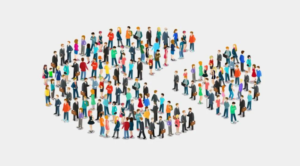Market segmentation is the practice of dividing your target market into approachable groups. Market segmentation creates subgroups of a market based on demographics, needs, priorities, common interests, and other psychological or behavioral criteria used to understand in a better way the target audience.
By understanding your market segments, you can benefit from this orientation in the product, sales, and marketing strategies. Market segments can power your product development cycle for this reason it is super important to create a good segmentation and know the benefits of doing this.
The benefits of market segmentation
It was found that organizations with great market segmentation strategies enjoyed a higher profit than companies whose segmentation wasn’t as effective.
These are some benefits of market segmentation:
- Stronger marketing messages: You can speak directly to a specific group of people in ways they can relate to, because you understand their characteristics, wants, and needs with a specific tone, code.
- Specific digital advertising: Market segmentation helps you understand and define your audiences characteristics, so you can focus your online marketing efforts to specific ages, locations, buying habits, interests…
- Developing effective marketing strategies: Knowing your target audience gives you a fresh start about what methods, tactics and solutions they will be most responsive to your audience.
- Attracting the right customers: targeted, clear, and direct messaging attracts the people you want to buy from you.
- Increasing brand loyalty: when customers feel understood, uniquely well served, and trusting, they are more likely to keep purchasing and being loyal to your brand.
- Differentiating your brand from the competition: More specifically, personal messaging makes your brand stand out and also personalizing campaigns make your customer feel important and part of something.
- Staying on message: As segmentation is so linear, it is easy to stay on track with your marketing strategies, and not get distracted into less effective areas.
- Fast growth: You can encourage customers to buy from you again, or create campaigns or sales only for them.
- Product development: You will be able to design new products and services with the needs of your customers top of mind, and develop different products that cater to your different customer base areas.
Also read: How foodie influencers are at the forefront of the food revolution
Why segment your market?
Segmentation helps you understand your market better and tailor your content and campaigns to their preferences and pain points and as we saw previously it has a lot of benefits. Through segmentation, you can improve targeting and personalization, increase ROI and conversion rates, as well as enhance customer loyalty and retention. By doing this you can create relevant content for each segment and reduce costs because you have a very focused marketing strategy that in the end offers more value and satisfaction to build stronger relationships.
How to segment your market?
Segmenting your market is essential, depending on your objectives, data, and resources. Here we find four type of segmentations:
- Demographic segmentation looks at factors such as age, gender, location, income, education, or occupation. This helps to understand the basic characteristics of your market and create broad personas.
- Psychographic segmentation looks at personality, values, attitudes, interests, or lifestyle. This helps to understand the motivations and aspirations of your market and create a more specific type of persona.
- Behavioral segmentation looks at purchase history, usage frequency, loyalty, or engagement. This helps to understand the actions and habits of your market and create more dynamic personas.
- Needs-based segmentation looks at problems, challenges, goals, or desires. This helps to understand the pain points and solutions of your market and create more empathetic personas.
The world of influencer marketing has been exploding in recent years, and for good reason. With the rise of social media platforms, businesses have access to a huge audience of potential customers who can be reached through influencers with large followings.
But finding the right influencer for your brand can be a very hard task. By dividing your target audience into smaller, more specific groups based on their characteristics and behaviors, you can better understand their needs and preferences. This can help you identify the influencers who are most likely to resonate with each segment, allowing you to create more effective and targeted campaigns. That’s why it is super important to find the right influencer for your campaign.
How to segment your influencers?
You can use the same criteria to segment your influencers. Influencers are people who have a large and loyal following on social media or other platforms, and who can affect the opinions and decisions of their audience. By segmenting your influencers, you can find the most relevant and influential ones for each segment. For example, you can look for influencers who share the same characteristics, interests, behaviors, or needs as your segments, as well as those with a high engagement rate, reach, and authority in your niche. This includes using their content and recommendations to increase your brand awareness, trust, and credibility among your segments.
How to segment your content and campaigns?
Segmentation is not only beneficial for finding and engaging with influencers, but also for crafting and delivering content and campaigns. Segmenting your content and campaigns allows you to align them with your segments needs and goals.













